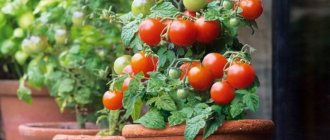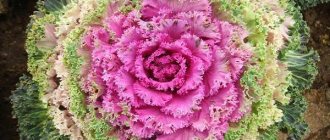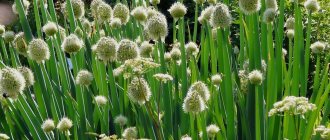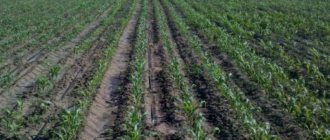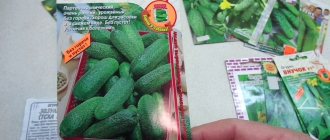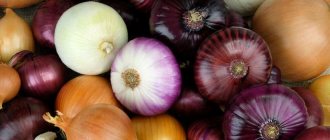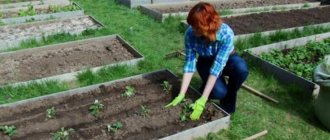Author's rating
Author of the article
Yakov Pavlovich
Professor, Head of the Department of Vegetable Growing
Articles written
153
Gardeners prefer perennial onions for the high yield of greens, which can be obtained in early spring. The culture is similar to two-year-old fruits in terms of nutritional, bactericidal and phytoncidal characteristics. Also, onions do not require special care, so during the April-May period, a large amount of greenery can be grown in the beds.
Perennial onion: description and characteristics of the plant
Perennial onions are very diverse. Each variety differs in taste, duration of ripening, external characteristics and subtleties of construction. Gardeners liked perennial onions due to the opportunity to get an early harvest. The plant also contains amino acids and vitamins that are essential for the normal functioning of the human body. The culture has a beneficial effect on the gastrointestinal tract, metabolic processes and immunity.
Varieties of perennial plants tolerate low temperatures well, so they are grown in regions where the thermometer drops to -40°C.
Chives
The leaves of this onion have time to begin to grow while still under the snow cover. They are extremely narrow, only 2-4 mm in diameter, but there are many of them, they are collected in dense bunches, remaining almost intact even after cutting. Chives bloom very early, and the flowers are very decorative. Therefore, those gardeners who use feathers for food always try to make the first cutting before flowering, back in May. If you do not touch the flowers, then the bed with chives will remain a beautiful flower bed with pink and purple flowers for a long time.
In just a season, it is usually possible to carry out three massive cuttings, but you can take a little leaves at least every day. This onion grows very quickly, forming turf, so it is not kept in one place for more than 3-4 years. Among the varieties, the most frost-resistant is Siberian; popular varieties are Bohemia and Chemal.
Pros and cons of growing
The advantages of growing perennial onions include:
- the ability to produce crops on the same plot of land for up to 5 years;
- Plants contain a large amount of useful substances;
- to grow a crop, you do not need to prepare the soil for a long time and difficultly;
- the false bulb is capable of producing leaves without interruption;
- the culture is frost-resistant; some varieties are able to withstand temperatures of -40°C;
- the vegetable resists most pests and is not afraid of diseases such as onion nematode;
- ability to develop under a layer of snow;
- the first harvest is obtained after the snow cover melts;
- many varieties have a pleasant spice and aroma;
- The crop is grown both in greenhouses and in open ground.
- flowering species are characterized by decorativeness.
Perennial onions have few disadvantages:
- Only the green part of the plant can be used;
- The crop requires regular weeding to prevent the beds from becoming overgrown with weeds.
Harvest and storage
Most varieties of perennial onions are cultivated for the richness of their greens. The crop is harvested gradually as it ripens, plucking several feathers at a time, or 3-4 total cuttings are carried out over the entire season. When harvesting in large quantities, they use scissors, grabbing the feathers at the very root.
To prolong fruiting, flower shoots are removed from the general green mass of the perennial onion bed.
It is recommended to carry out the final cutting no later than a month before frost. The foliage is stored in the refrigerator in a loosely sealed bag. Typically, feathers feel comfortable in the refrigerator for 10-12 days after being cut from the garden. You can freeze a large amount of feathers for long-term storage; after thawing, the onions retain most of their beneficial properties.
Few varieties of perennials can boast a harvest of bulbs. If this particular option is grown, when harvesting bulbous species, watering must be stopped 2-3 weeks before digging. After removal, the rhizomes are thoroughly dried and carefully discarded before storage. Bulbs are usually stored without removing the husks in a dry room at a temperature no higher than 1 degree.
About the types of perennial onions, about their care and use in decorating flower beds, watch the following video:
Perennial onions are increasingly gaining popularity among gardeners due to the cultivation of new varieties and the unpretentiousness of the crop. Compliance with all growing rules, preventing the appearance of pests and preventing diseases allows you to obtain a lush harvest of perennial onions from one bed for several years.
1
0
Copy link
Varieties and varieties of perennial onions
Many gardeners plant several varieties of perennial onions in their garden beds at once, and there is an explanation for this. Thanks to the large number of species, the crop is capable of performing several functions at once: satisfying gastronomic preferences and decorating the garden plot.
shallot
The names of perennial onions are excellent; each variety has an original “name”. Shallots are a type of onion, but are more sugary. The plant forms a nest consisting of small bulbs. The leaves are erect, delicate, with an emerald tint. Onions are grown for their aromatic greens. It is considered the most delicious variety. Greens have a sweet taste.
Schnitt
This species is similar to spring onions in biological characteristics and method of planting. A distinctive feature is the appearance of the leaves: succulent, narrow and tubular. After cutting, they do not fall apart, but are kept in a bundle. They stretch up to 30 cm in length. Flowers grow in the form of purple balls. The leaves can be eaten, but chives are mainly used as an ornamental crop in garden beds.
Multi-tiered bow
Multi-tiered onions are characterized by high productivity and longevity. The crop can bear fruit in one area for up to 7 years. Inflorescences are formed in the form of aerial bulbs growing in several tiers. The leaves are palmate and hollow. They grow up to 50 cm. Multi-tiered onions are planted all year round. The greens grow to the desired length in 30 days.
See also How to deal with onion fly
Slime Bow
Characterized by a flat sheet. Grows in the form of a bush. The leaves reach 30-40 cm in length, with a width of 4 cm. The color is light green. A feature of the slime onion is the presence of juicy and tender leaves throughout the growing season. The inflorescences grow in the form of large purple balls. The roots are close to the surface of the earth, the greens need abundant watering. The taste is pleasant, with a hint of pungency.
Batun
The variety is popular in east and southeast Asia. In these places it can be found growing wild. The batun came to Russia from China.
The long false stems are used for food. The species acts as a two-year culture. It has excellent cold resistance.
The bush has many branches, succulent leaves reach a height of 50 cm or more.
Prevention and control of diseases and pests
Perennial onions are rarely affected, but are sometimes susceptible to rust and powdery mildew. Insects that can harm this crop: tobacco thrips, onion fly and secretive proboscis.
Agronomists do not recommend the use of chemicals to treat or get rid of pests of perennial onions. It is believed that prevention and implementation of protective measures are the most effective way to protect culture from possible misfortunes. To do this you need:
- Grow perennials on fertile soil in compliance with all parameters.
- Do not choose a site for replanting where onions or perennial onions have grown over the past 4 years.
- Remove weeds periodically. Many harmful insects lay eggs on weeds that grow in or near garden beds. Mature pests move onto perennial onions and cause damage.
- Use exclusively healthy and high-quality material for sowing and growing season.
- At all stages of crop growth, check and, if present, remove dead and damaged shoots that can become a breeding ground for diseases. This is especially true in late autumn to avoid overwintering pests.
- Separate the crops of onions and perennial onions. If the size of the plot does not allow such precautions to be taken, and onions are a priority, then it is better to abandon perennial onions altogether.
Repelling pests works well in different ways:
- Watering the beds with a composition based on peat with tobacco: boil 400 g of dried shag in 10 liters of water and, diluting the broth 40 times and adding 30 g of laundry soap to the watering part of the composition, water the soil.
- Mulching with peat mixed with tobacco dust.
- Spraying perennial onions with 1% Bordeaux mixture. To consolidate the result, you can repeat the treatment with this composition after 10 days.
- Careful inspection and, if necessary, removal of larvae, eggs, and beetles in the beds.
The feathers of perennial onions are covered with a waxy coating. When spraying, it is recommended to add a little sour milk or laundry soap to the solutions for effective adhesion of the drug to the plants.
Landing specifics
Perennial onions are easy to care for. However, when planting, you should follow the rules to avoid problems in the future.
Site selection and preparation
The soil must be fertile and drained. You should not add fresh humus before planting. The bed should not be highly acidic. This soil is not suitable for perennial onions. Before the autumn digging of the earth, lime is added.
A landing site is chosen without shade. It is advisable to stay in a bed protected from the wind.
In the process of digging the earth, organic matter (compost or humus) is added to the bottom layer. In the spring it is worth adding mineral fertilizing (nitrogen, potassium, phosphorus).
Disembarkation dates and schemes
The seeds of perennial onions hatch earlier than nigella. The crop can be planted on a flat bed, in ridges or ridges. The choice is made based on the type of soil, weather conditions, and the depth of groundwater.
The best option would be to plant according to a row pattern: 20 cm between plants in a row, 70 cm between rows. This way the plant will get maximum space for development.
Expert opinion
Stanislav Pavlovich
Gardener with 17 years of experience and our expert
Ask a Question
Attention! In regions with cold climates, perennial onions are planted in seedlings. Planting material sown in January is ready to be transferred to open ground in April.
Shallot
Although shallots are a perennial onion, biologists consider them to be a type of onion. True, his bulbs are very small. In addition, they ripen two weeks earlier than onions and have a less pungent taste. But shallots also produce a lot of greens, so they are a completely universal plant. Due to the fact that its bulbs are assembled (like garlic) from many small cloves, it is often called the magpie. It is with its teeth that it is usually propagated.
Shallots can grow without replanting for many years, but most gardeners plant them every 2-3 years, simultaneously using the bulbs for food. There are many varieties of shallots, the most famous are Airat and Izumrud.
Other types of perennial onions (for example, oblique, Altai, fragrant, etc.) are much less common in vegetable gardens.
Rules of care
Caring for perennial crops is not difficult. That is why gardeners give them preference. However, there are some nuances.
- It is necessary to remove greens in a timely manner.
- After planting the seeds, mulching is carried out with humus, peat, compost and sawdust.
- Plants need systematic feeding from the second year of cultivation. In the spring, fertilizers based on potassium, nitrogen and phosphorus are applied. In autumn, the soil is not enriched. You will have to fertilize the beds again in early spring.
- Weeds pose a threat to young perennial plants. Therefore, the soil near the plants should be loosened regularly.
- You need to moisten the soil in the evening.
- It is necessary to carry out preventive treatments against pests and diseases.
Slime Bow
The leaves of this onion are flat and wide, like garlic, only much juicier. Actually, they taste (delicate, mildly spicy) very much like garlic. If you break off the flower arrows in time, the greens are edible from early spring until frost, but flowering makes them rough. It grows anywhere, but, unlike batun, does not tolerate drought well. It is important to remember that a slime left to its own devices can quickly fill an entire area: it reproduces so easily by self-seeding.
There are few varieties of slime; the most popular is Green with very large leaves. It is productive: if you cut it once a month, you can remove up to 6 kg of vitamin-rich greens from a square meter at a time.
Preparing for winter
Perennial onions are not fussy and tolerate winter well. But a gardener can take measures to help the crop feel better:
- 10 days after the final harvest, the crop is given phosphorus-potassium fertilizer with the addition of microelements;
- in the last days of October, dry foliage and arrows are removed, it is also necessary to remove unhealthy parts of the bushes that have twisted feathers;
- To prevent the plant from freezing into the ground in winter, the soil is loosened and lightly hilled, and mulching is also carried out using sawdust or peat;
- After snow falls, the beds are lightly trampled down to prevent rodents from making holes in the crop.
See also: Planting and caring for onion sets in open ground
Onion
This species is perhaps more famous in our country than others. An adult plant has large leaves that do not differ in appearance from the leaves of ordinary onions. However, there are no bulbs as such, and the false bulb (from which the leaves grow) is unsuitable for food. Feather regrowth begins immediately after the snow cover disappears. The baton is usually kept in one place for five years, after which it is transplanted. You can grow batun on the balcony, and in the north it is even grown in greenhouses.
Several subspecies of batun are known; the Russian one is considered the most cold-resistant. Even feathers that grow in spring can withstand unexpected frosts down to -8 degrees. Because its roots reach deep into the ground, this onion is very drought tolerant. Batun is also used in medicine, in particular oriental medicine. The differences between the available varieties are insignificant; the most popular are April and May.
Breeding technology
There are several technology options for breeding perennial onions.
Seeds
Planting of perennial onions into the soil occurs in spring or late autumn (before winter). This rule affects how quickly seedlings emerge.
When sown in open soil in spring, the plant will hatch after 14 days. In this case, the crop grown from seeds will develop slowly. At the same time, the gardener should not lose sight of the onion. Experienced specialists, in order to avoid a long germination process, resort to the seedling method. The method includes several stages. Firstly, the planting material is washed in potassium permanganate and soaked for 24 hours in warm water. Secondly, surface sowing of onions in seedling containers is carried out.
For the development of culture, it is necessary to provide appropriate temperature conditions. The air should warm up to +20-22C until shoots appear and to +18-20C from the moment they appear. The seedlings sprout within two months. The seedlings are transplanted in May. Before planting in open ground, the soil is loosened, drained and, if necessary, fertilized.
To obtain early greenery, sowing is done before winter. When the thermometer drops a couple of degrees in autumn, seeds are sown thickly. The norm increases by 25%. This planting will allow you to get seedlings 14 days earlier in the spring. Another advantage of the method: low temperature conditions prevent rapid bolting of the crop. For this reason, it is possible to collect succulent feathers of perennial onions for a long time.
Root division
Typically, gardeners divide bulbs in mid-spring or late summer. To do this, roots are taken from adult specimens of perennial onions and the fruits are divided so that each has one mature shoot.
Planting is done in the following beds: 20x70 with onions deepened 8 cm into the soil.
Multi-tiered bow
Not only the feathers of this onion are edible, but also the bulbs, despite the fact that they are small. The basal ones grow over the years and the nest can be carefully divided, but, in addition to them, so-called aerial bulbs are also formed in multi-tiered onions. They grow instead of the usual inflorescences. If you leave them alone, then leaves grow from them, which, in turn, are able to form a new tier, resulting in 3-4 “floors” growing.
The plant reproduces with aerial bulbs, and this happens without the participation of the gardener (they can “land” or break away from the plant closer to autumn). These bulbs are absolutely edible, but since their size rarely exceeds 2-3 cm, they are mainly pickled. Only a few varieties of this onion are known, the most popular being Likova and Chelyabinsk.
Features of varieties
Different types of green onions require attention and consideration of their characteristics. There are several popular varieties that are grown in 80% of cases in gardens.
Slime
This is an onion with flat and green feathers, the name of which indicates its relationship with the ordinary onion, and is popular because it is resistant to severe frosts. It is a perennial - it can grow in one place for 5-6 seasons after planting. Slime has flat leaves (feathers), which, despite their visual massiveness, are very fragile.
The taste is pleasant, there is no pronounced onion pungency. After cutting, the taste remains for a long time. It is recommended to eat before the arrows appear. The root system is located at a depth of up to 20 cm. This variety loves moisture very much, so it will require frequent watering. It does not have any special requirements for light, so it can be planted in a shady area. There are such features as:
- new leaves appear constantly;
- planting takes place in mid-summer, harvesting in mid-April.
Important! Slime grows well in areas where there are frequent plantings.
Bow Slime
Schnitt
This variety is actively planted in vegetable gardens. Its leaf is visually thinner, narrower, but strong - it is difficult to break it. Cut feathers do not crumble in your hands, which makes it possible to form neat bunches.
Transports well. Frost resistance is very good - leaves begin to form even under the snow. In one place without replanting, the plant can grow for up to 3 years, after which the yield decreases and the onion needs to be replanted. A special feature of the variety is the ability to grow onions for greens in winter.
In the autumn, you need to dig up the rhizomes, then during the winter they can be grown in pots. Before planting, you need to keep them in a room with a temperature no higher than +10 degrees (balcony or basement). After planting, the first leaves appear within 3 weeks.
Feature - one plant can produce 2-3 crops. Chives are also used as an ornamental plant, so they can be grown at home rather than in open ground. This perennial is capable of flowering. Shades: red, pink, purple. The buds are represented by arrows with spherical umbrellas at the top.
Multi-tiered
It is also called walking onion. Shoots appear among the first, even if several species of this plant grow in the garden. In the first year after planting, the appearance of the leaf blade is different from what it will be in the future - the leaves are hollow, fist-shaped. In the second year, the formation of a flower arrow occurs. As a result, several tiers are formed - 2-5 pieces. Each bulbous row is represented by several small formations. The first tier is formed at a height of 0.5-0.8 meters. As soon as they appear, the leaves immediately begin to develop. Their length is on average 12 cm.
Onion propagation also occurs after the bulbs fall to the ground under their own weight. This early onion, with initially wide, dark green leaves, has a delicate aroma, a mild taste, and no bitterness. Feature - young onions are used as greens; the onions can be boiled and fried, pickled, or added to preparations with other vegetables.
Note! If the bulbs have taken root, they are not used for food. You need to tie the arrows and also pin the plant - this will help form the first tier. In cases where air bulbs are not needed, it is recommended to cut the feather. Plantings of this type of perennial onion should be regularly updated. It is best to do this every 3-4 years. Bulbs for planting are placed in prepared soil at the end of summer or in September so that the plant can take root. The winter hardiness of the variety is high.
Shalott
Many people use shallots for feathers; they are perennial, capable of growing in one place without replanting for 2-3 years. The leaves are quite juicy and have good taste. The rich greenish color looks good on a plate, which is why shallots are actively used as a decoration for salads. Winter hardiness is good, productivity is high.
Shalott
Batun
If you need a thin and compact onion, then this variety is not suitable for planting. It is grown in 70% of cases, as its large and juicy dark green leaves have a rich aroma and a sharp, pronounced taste reminiscent of garlic. Feathers are used exclusively for food. There is no full bulb.
There are several varieties of the variety. Each of them differs in the following indicators:
- precocity;
- foliage;
- frost resistance.
A common feature of the class is that leaf growth begins after the snow cover melts. Reproduction is done by seeds, as well as by dividing the bush.
If seeds are used, they can be sown in spring, summer or autumn. If the sowing was done in autumn (pre-winter) or spring, then the harvest is formed at the end of summer.
If planting was done in the summer, the harvest is divided into several stages:
- Several onion feathers appear in autumn;
- in spring the leaves become completely edible.
The first greens can be obtained in early spring. To do this, if there are autumn plantings, they should be covered with film immediately after the snow cover melts.
When the vegetative propagation method is used, plants are planted in autumn or early spring. The rhizome is divided into parts of 2-3 plants. Then you need to trim the roots to 3-4 cm, trim the leaves to 5-8 cm. When planting, you will not need to cover the growth point of the seedlings with soil.
General conditions for growing onions
Onions are cold-resistant crops; a comfortable temperature for them is 12-16 degrees Celsius; for seed germination, a temperature of 4-5° is sufficient. Adult bulbs can withstand five to six degrees of frost without damage. Moreover, sharp varieties are more frost-resistant; for sweet varieties, frost of three to four degrees already poses a threat.
In the first 2/3 of the development period, onions need regular watering, and in the last third it is recommended to slightly dry the soil. Onions have a higher sunlight requirement than most root vegetables or cabbage. The soil requirements are also quite high; soils with a neutral or slightly alkaline reaction are better suited.
Place of cultivation
The first available area is not suitable for onions. The main factors that determine where to grow onions are the fertility of the soil and the number of weeds on it. It is advisable that the area where the onions will be grown be located higher on the plot, so that the winter snow and all excess moisture melt off from it first.
For onions, the ideal soil is fertile and loose soil with neutral acidity. Acidic and too heavy soils are unacceptable for onions - the yield in such cases drops by 3-4 times.
Place for onions: sunny area without large trees and bushes
The soil must be “prepared” for planting onions - it must contain the required amount of nutrients. Previously planted green manure or correct onion predecessors will help ensure this soil condition. It is believed that good predecessors of onions are cucumbers or potatoes, which were grown using heavy organic fertilizers (manure, compost). Any legumes or oats mowed before flowering are recommended as green manure.
It is also important that the site has as few weeds as possible. Of course, during the initial treatment of the site, they will be removed, but everyone is well aware of the survivability of weeds. Therefore, the fewer there are initially, the better.
When growing onions, you should remember that this crop (unlike its recommended predecessors) reacts very negatively to manure. It is believed that onions grown under manure often get sick and do not have time to ripen. In addition, manure itself can contain a huge number of weeds that are destructive to onions.
In this regard, the ideal fertilizer that is recommended to be applied to the plot before sowing onions for any growing method is humus. The rate of humus application for growing onions is 3-4 kg per 1 sq. m. m. This organic fertilizer will not be able to provide the full range of fertilizers necessary for onions for normal development and fruiting.
Double superphosphate as a top dressing
Therefore, it is also necessary to add the following substances to the site as fertilizers for onions:
- superphosphate (or double superphosphate) – 50 or 25 g per 1 sq. m respectively
- Ammonium nitrate – 10-12 g per 1 sq. m
- potassium salt – 15 g per 1 sq. m
Preparing the soil for onions should begin immediately after the predecessor plant has been harvested or 1-2 months after the green manure plant has been mowed, crushed and dug up with soil.
Preparation begins with shallow loosening of the soil to a depth of about 6-10 cm. This will help get rid of the bulk of the weeds. After loosening is completed, it is necessary to carefully inspect the area and remove any remaining weeds (stems, roots, leaves, flowers and seeds). It is advisable to then harrow the area, for example, with a rake, and inspect it again for the presence of remaining weeds.
After this (usually after 2 weeks), mineral fertilizers are applied and the area is dug up to a depth of about 15-20 cm. It is recommended that this procedure should not take place later than the third ten days of September, so the timing of harvesting predecessors or completing all operations with green manure should take this into account time limit.
Soil cultivation begins with the addition of humus
At this point, the preparation of the site for onions in the autumn can be considered complete. Onions are planted very early, therefore, as soon as the snow begins to disappear from the area, it is necessary to begin cultivating the land by adding humus to it. There is an alternative version of fertilizing: in the fall, not all mineral fertilizers are applied, but only some of them - for example, superphosphate. The remaining components are added to the plant along with humus in the spring.
After the humus is evenly distributed over the site, they begin to form the beds. The recommended width of the beds should be about a meter, and the distance between them should be about 40 cm.
At higher elevations, it is recommended to make the height of the beds from 10 to 15 cm, in the lowlands it should be slightly higher - from 20 to 25 cm. Mineral fertilizers are applied after the formation of the beds and they are evenly distributed over their area. After all procedures are completed, you can begin planting onions.



